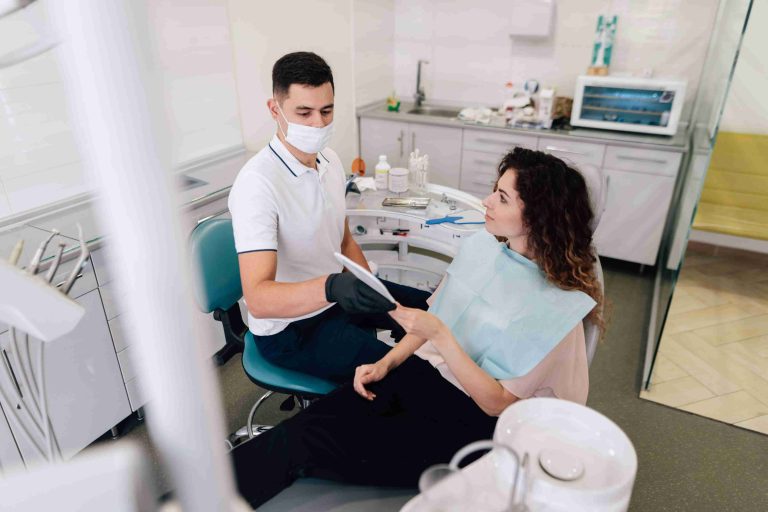Digital Smile Design (DSD) is an innovative approach that merges dentistry with digital technology to enhance the planning and visualisation of dental treatments. It involves using advanced digital tools and software to create a precise, personalised model of a patient’s ideal smile. By analysing facial and dental characteristics and structures, DSD enables dentists to design aesthetically pleasing, functionally effective, and emotionally resonant smiles.
At its core, DSD is about more than just enhancing teeth—it’s about designing a smile that complements a patient’s unique facial features and personality. This approach offers numerous benefits, including improved diagnostic accuracy, enhanced communication between the dentist and patient, and greater predictability of treatment outcomes. As a result, DSD empowers dental professionals to become true smile architects, creating beautiful, harmonious smiles that reflect their patients’ physical and emotional needs.

The DSD journey begins with a thorough initial consultation and assessment. This step is crucial as it creates a customised and precise treatment plan that aligns with the patient’s desires and dental needs. Here’s what happens during this phase:
In step 2 of the DSD process, dentists leverage advanced DSD software to analyse the patient’s facial and dental proportions. This step is pivotal in creating a personalised, aesthetically pleasing, and functionally sound smile. Here’s how it unfolds:
Step 3 of the DSD process involves developing a customised treatment plan based on the digital design created in the previous step. This stage is crucial in translating the digital mock-up into a practical, actionable plan that guides the entire smile transformation journey.
In Step 4 of the DSD process, the carefully crafted treatment plan is brought to life by executing the planned procedures. This step is where the vision of the digital mock-up becomes a reality, transforming the patient’s smile in alignment with their expectations and the digital design.
The final step in the Digital Smile Design process is the final review and adjustments, where the completed smile is meticulously evaluated to ensure it meets the patient’s expectations and delivers the desired results. This stage is crucial for achieving patient satisfaction and providing a new, beautiful, and functional smile.

The DSD method revolutionises traditional dental practices by integrating advanced digital tools and techniques with conventional approaches to achieve highly personalised and precise smile transformations. Here’s how DSD seamlessly blends with conventional dentistry:
Digital Smile Design (DSD) is transforming the landscape of modern dentistry by combining advanced digital tools, artistic vision, and precise treatment planning to create stunning, personalised smiles. This innovative approach ensures that each patient receives a tailored solution that meets their aesthetic goals and enhances overall dental function and health.
Ready to transform your smile?
Visit our Smile Design and Cosmetic Dentistry Services at Hello Dental to consult with our expert team of dentists, ready to guide you on your personalised smile journey. At Hello Dental, your smile reflects who you are, and our skilled professionals will work with you to design a smile that aligns with your unique style and needs. Don’t wait—book your consultation today and take the first step towards a more confident, beautiful smile! Your smile is one of a kind—let’s make it extraordinary!
Copyright © 2024 Hello Dental Clinic. All Right Reserved.
475, Jalan Sultan Azlan Shah,
Taman Million,
51200 Kuala Lumpur
Mon-Fri: 09:00-19:00
Sat-Sun: 09:00-17:00
V06-02-05, Signature Retail Lot,
Sunway Velocity,
Lingkaran SV, Jalan Shelley,
55100 Cheras KL
Mon-Fri: 09:30-21:00
Sat-Sun: 09:00-18:00
2-02, Level 2, Wisma Conlay,
No.1, Jalan USJ 10/1,
Taipan Business Centre,
47620 Subang Jaya, Selangor
Mon, Tue, Fri: 10:00-18:30
Wed, Thu: 10:00-21:00
Sat, Sun: 09:00-15:30
G-8, Idaman Robertson,
No. 2, Jalan Robertson,
50150, Kuala Lumpur.
Mon, Thur: 11:00-20:00
Tue, Wed, Fri: 09:30-21:00
Sat, Sun: 10:00-19:00
No. 2-2 (Second Floor),
Jalan Solaris 5,
Solaris Mont Kiara,
50480 Kuala Lumpur
Mon-Fri: 10:00-19:00
Sat-Sun: 10:00-18:00